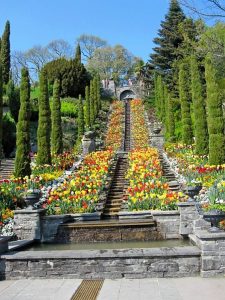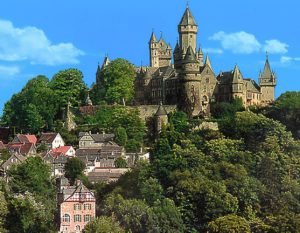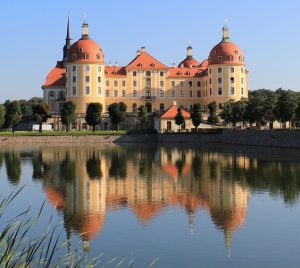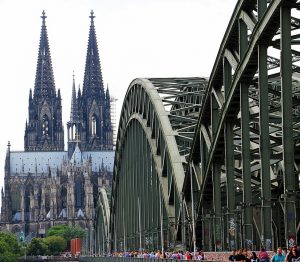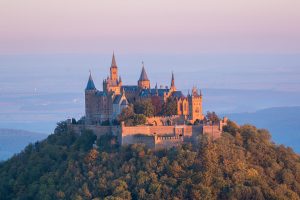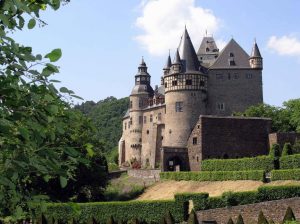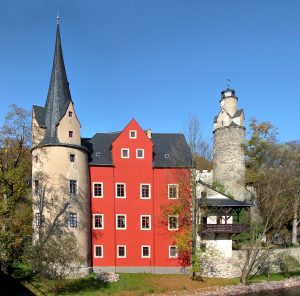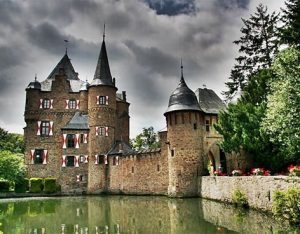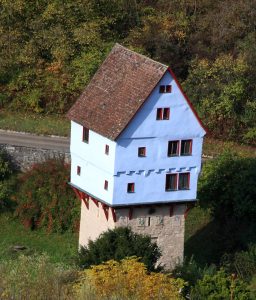The Flower Island of Mainau in Lake Constance may only cover 45 hectares of land, but it is home to an extraordinary diversity of trees, flowers and shrubs. Its other attractions include a 13th century baroque palace, a palm house and the biggest butterfly house in Germany. Mainau Island lies just off the shores of Lake Constance in … [Read more...]
Schloss Braunfels
Castle Braunfels is located on a basalt rock west of the health resort Braunfels in the Central Hessian Lahn-Dill-Kreis. The castle soars 100 m (328 ft) above the Lahn valley. It has been the seat of the Counts of Solms since the 13th century and is still owned by the counts of Oppersdorff and Solms-Braunfels in the 21st century. As Castellum … [Read more...]
Schloss Moritzburg – a Beautiful Baroque Castle
Moritzburg Castle is one of the most impressive baroque palaces in central Europe. Reached via a tree-lined avenue, it is situated on an island in the middle of a lake. After visiting the palace, you can enjoy a romantic stroll to the enchanting Fasanenschlösschen (little pheasant castle) built in the rococo style. Moritzburg Castle (Schloss … [Read more...]
Altena Castle – World’s First Hostel
Altena Castle (Burg Altena) is a Medieval hill castle in the town of Altena in North Rhine-Westphalia. Built on a spur of Klusenberg hill, the castle lies near the Lenne in the Märkischer Kreis. The castle was erected by the early Counts of Berg in the early 12th century. Eventually, the House of Berg abandoned Altena and moved their residence … [Read more...]
Kölner Dom – Cologne Cathedral
Cologne Cathedral (Kölner Dom) is a Roman Catholic cathedral in Cologne, Germany. It is the seat of the Archbishop of Cologne and of the administration of the Archdiocese of Cologne. It is a renowned monument of German Catholicism and Gothic architecture and was declared a UNESCO World Heritage Site in 1996. Begun in 1248, the construction of this … [Read more...]
Hohenzollern Castle – A Fairy-Tale Hilltop Castle
Swabian counts and princes, the kings of Prussia and even the German emperors have their roots here at Hohenzollern Castle in the heart of Baden-Württemberg between Lake Constance, the Black Forest and Stuttgart. The proud fortress offers majestic panoramic views stretching over more than 100 km which already prompted Emperor William II to … [Read more...]
Schloss Bürresheim – a Medieval Castle in the Woodlands
The castle of Bürresheim is located at northwest of Mayen on a rock spur in the Nettetal. It belongs to the local church Sankt Johann. Together with Burg Eltz and the castle Lissingen, it is one of the few castles in the Eifel that were never conquered or devastated and were able to survive unscathed the wars of the 17th and 18th centuries as well … [Read more...]
Castle Stein in Saxony
Stein Castle, or Burg Stein is a Saxon castle located southeast of Zwickau in the village of Stein in the municipality of Hartenstein on the banks of the Zwickauer Mulde. The settlement of the Ore Mountains (Erzgebirge) began in the 12th/13th centuries, especially along the rivers. River crossings and religious orders (Niederlassungen) were … [Read more...]
Burg Satzvey – Moated Castle
Satzvey Castle is one of the best-kept moated castles in Rhineland, whose origins go back to the 12th century. Satzvey Castle is well-known today for its diverse events, showing history and tradition in an interesting and fun way. Burg Satzvey is a medieval water castle, originally from the 12th century, and is located on the north-eastern edge … [Read more...]
Toppler Castle
In Germany, castles come in many shapes and sizes. Built in 1388 partly as a residence and partly as a fortress, this was the home of Rothenburg’s legendary mayor, Heinrich Toppler. Fully intact, the building is furnished with items from the 16th to the 19th centuries. Located in the Tauber Valley and accessed via the Double Bridge or … [Read more...]
- « Previous Page
- 1
- 2
- 3
- 4
- 5
- …
- 8
- Next Page »
